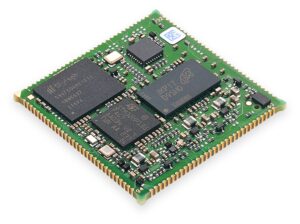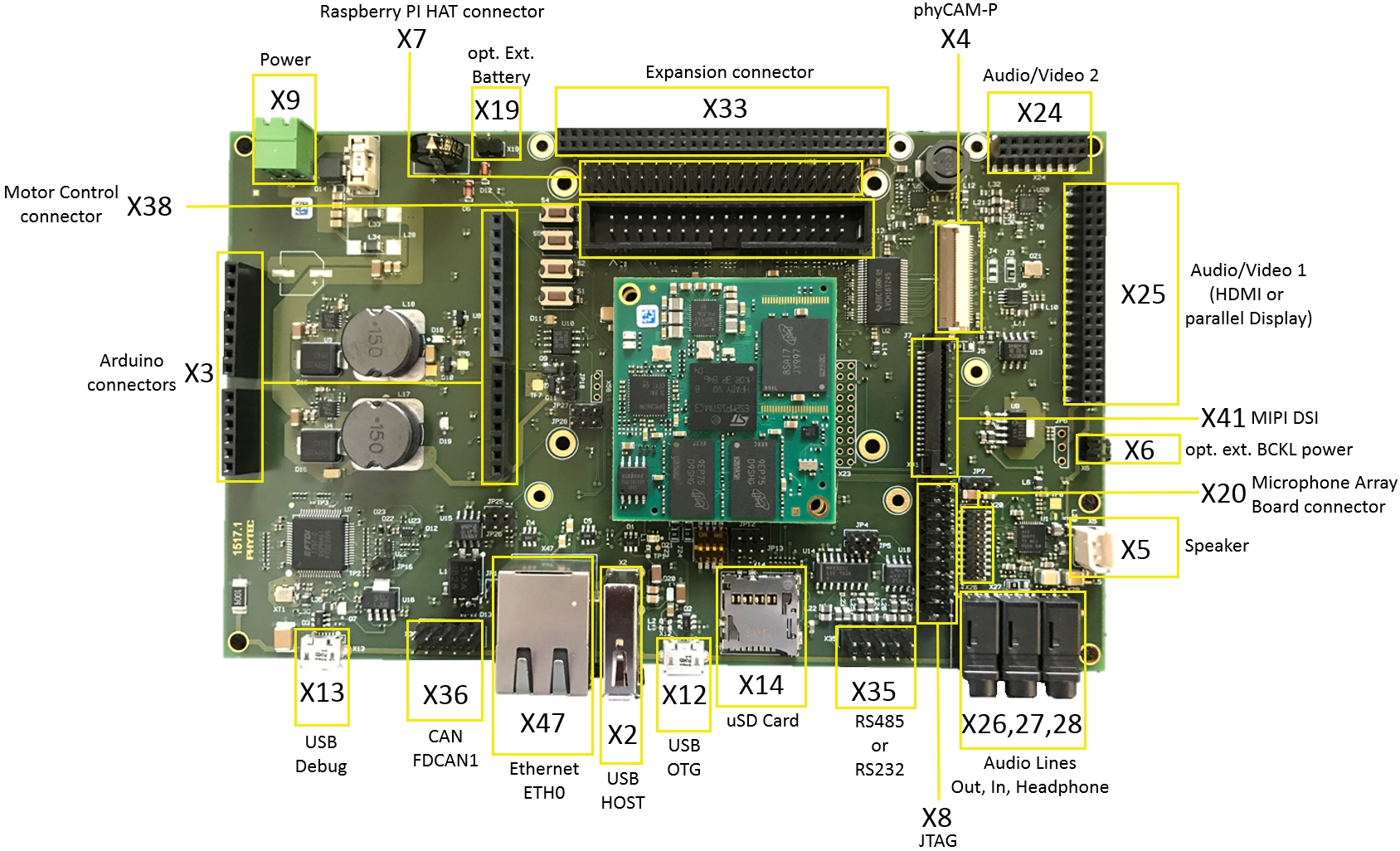What can a System-on-Module do for engineers? We sat down with Phytec, an ST Authorized Partner, to understand this question through the lens of its phyCORE®-STM32MP15x and its phyCORE-STM32MP13x. We met with three experts from Phytec: Yves Astein, Head of Product Management, Phytec Germany, Christophe Parant, R&D Engineer, Support, PHYTEC France, and Dieter Heger, Team Leader-Customer Project Management, PHYTEC Germany. Embedded Linux continues to be increasingly popular in IoT and impacts the industry in many ways. Consequently, SoMs are increasingly common, and companies like Phytec are providing new services and training opportunities. Hence, as workflows change, let us look at three ways developers can work differently for quicker and better results.
Tip #1. Make the most of the Phytec’s SoM
Discovering all hardware solutions

A trap engineers sometimes fall for is that they start their custom carry-board before considering what’s already available. In this instance, the phyCORE-STM32MP15x and phyCORE-STM32MP13x can fit onto the phyBOARD-Sargas and phyBOARD-Segin, respectively. Both are a single board computer (SBC) with many I/Os essential for developers wanting to use all the features of the STM32 MPUs rapidly. Put simply, it’s easy to jump head first into a custom design before realizing that most if not all of a team’s need could have been met with an existing platform.
For example, the phyBOARD-Sargas offers Ethernet, CAN-FD, an HDMI port, a MIPI DSI connector, a microSD card slot, and an Arduino connector for expansion boards. Moreover, Phytec includes a connector for its camera module to facilitate the creation of image recognition applications. Too often, integrators go through numerous PCB iterations. By starting with a phyBOARD-Sargas, designers can use Phytec’s schematics and simply remove unnecessary features. PCB layout design, therefore, becomes more straightforward and more efficient, leading to a quicker path to the final product.

With or without a removable form-factor
Additionally, Phytech offers two different packages. The phyCORE-STM32MP15x features a Samtec 2 x 120 pins connector. Such a removable form factor means one SoM can go onto multiple systems, thus vastly improving its practicality. In some instances, companies may also choose a removable form factor for its upgradability. For example, replacing a SoM with a similar one with more memory could hardly be simpler. Additionally, phyCORE-STM32MP13x uses solder pads, which makes the entire thing more cost-effective. Hence, if engineers have space constraints, they can design around a more efficient SoM. Similarly, the form factor is easy to solder onto the SBC and enables good thermal dissipation between heat sinks and heat spreaders.
Tip #2. Jumpstart your application with some of Phytec’s software
A virtual machine and quick start guide

Going from a proof-of-concept to a final product can be a daunting task. However, Phytec simplified the process by offering two software solutions. The first one is a virtual machine (VM) that users can install to start testing their SoM. The company also provides ample instructions in its QuickStart Guide. As Phytec told us, the VM enables them to assist and lead their customers better. It provides a common environment that engineers can use to learn more about protocols, peripherals, and features. It also removes many of the frustration developers often experience at the beginning of a project. Instead of spending hours or days figuring out how to boot, teams can just start exploring the operating system.
STM32CubeMP1 Firmware Packages and STM32CubeMX Project File
The second software solution offers STM32CubeMP1 firmware packages and an STM32CubeMX project file. These bundles ensure engineers can rapidly get the middleware, header files, and pre-generated code they require to start working. Traditionally, developers spend time on their pinout configuration, clock tree, or abstraction layer configuration. But since Phytech designed the SoM, it can provide all this. Teams already familiar with the STM32 Open Development. Programmers just have to start working on their main loop. As a result, it makes the transition from proof-of-concept to final application a lot smoother.
Mainline Linux kernel
ST and Phytec place a similar emphasis on offering a mainline Linux kernel that works as the base for our and their Board Support Packages (BSP). By upstreaming its drivers, Phytec vastly improves the stability of and support for its BSP. Similarly, its work with the Linux community helps reduce the presence of bugs or vulnerabilities. The company also ensures that customers benefit from a common IP that’s more scalable and easier to work with. Indeed, a mainlined kernel enables developers to focus on their features rather than fix bugs, for instance. These are critical considerations when writing an industrial application with stringent requirements.
Yocto Layer and Training
Another challenge for many engineers is the Yocto layer that they must develop for their application. Phytec recommends that customers create a custom Yocto layer on top of the existing Board Support Package (BSP). It allows engineers to differentiate between their code and the lower layers from Phytec and ST. Additionally, the company offers a two-day Yocto training. As Yves, Christophe, and Dieter shared,
“Our intensive Yocto training is for any engineer, regardless of their experience. Even those with advanced knowledge will get new information out of it. Indeed, the seminar is a hands-on experience that gives attendees a much stronger understanding of Embedded Linux. Participants will leave with practical steps to configure and optimize their Yocto layer.”
Tip #3. Do More with the STM32MP1 than some do with Phytec’s SoM
Outsourcing Security
Teams working with a Phytec SoM must think beyond the hardware. Too often, companies spend months on features to fully take advantage of their STM32MP1, only to realize the SoM maker had something ready all along. For instance, Phytec’s understanding of our MPU means that its engineers can prepare a system for Secure Boot. Too often, small teams overwhelm themselves and give up on implementing security at the risk of dire consequences. Thanks to a close partnership, the ST authorized partner can handle the cryptographic keys, deactivate the JTAG interface, and more. Customers can thus easily enjoy all the security features of the STM32MP1 without wasting time and money.
The phyCORE-STM32MP13 also uses an STM32 MPU that supports cryptographic hardware acceleration. Consequently, developers can use powerful encryption algorithms without a performance penalty, a true random number generator to create genuinely secure keys, and even obtain a SESIP Level 3 certification. Besides the traditional anti-tampering protection and defenses against side channeling, the STM32MP13 was the first STM32 MPU to be able to receive such a high-security qualification. By adopting the phyCORE-STM32MP13, developers can start using those security features by using their implementation and pass certifications more rapidly
Outsourcing machine learning
A device like the STM32MP1 offers enough performance to run powerful neural networks, for example. Demos repeatedly show the type of image recognition or cloud gateway software that can run on ST’s MPU. Unfortunately, too many engineers miss the opportunity to benefit from such features because they don’t have data scientists on hand or years to spend on cloud computing, data gathering, and neural network design. Too many fail to grasp the fact that Phytec engineers can implement machine learning algorithms or image recognition applications. The company even has an in-house data scientist, Dr. Jan Werth, to help customers innovate. Hence, teams with more limited resources can ship competitive systems that would be out of reach otherwise.
Delegating Maintenance
The challenge for engineers is to view a SoM maker like Phytec as much more than a hardware vendor. The company does have modules built around an STM32MP1. However, it is a one-stop-shop solution with a wide array of services that makes our MPU more accessible and solves many challenges. Using a SoM means taking advantage of all the technologies and services its maker provides. For instance, as we talked to Yves, Christophe, and Dieter, one thing they wanted to highlight was that,
“Developers are often wary of the maintenance that an MPU requires. The phyCORE-STM32MP15x and phyCORE-STM32MP13 are, therefore, popular because they are solutions that move some of the maintenance onto the SoM maker. More specifically, Phytec manages and updates its operating system and all the pre-installed software. As a result, teams can simply focus on their application.”
